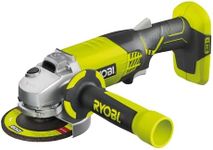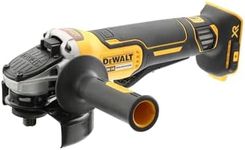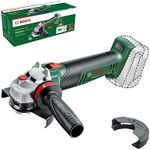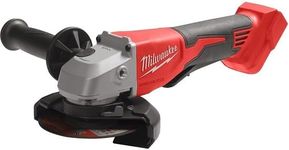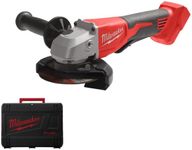Buying Guide for the Best Cordless Angle Grinder
Choosing the right cordless angle grinder can make a significant difference in your DIY or professional projects. These versatile tools are used for cutting, grinding, polishing, and more. To find the best fit for your needs, it's important to understand the key specifications and how they impact performance and usability. By considering these factors, you can ensure that you select a grinder that meets your specific requirements and provides the best value for your investment.Battery VoltageBattery voltage determines the power output of the cordless angle grinder. Higher voltage typically means more power, which is important for heavy-duty tasks. Common voltages range from 12V to 60V. For light tasks like polishing or small cuts, a 12V to 18V grinder may suffice. For more demanding tasks such as cutting through metal or thick materials, a 36V to 60V grinder would be more appropriate. Consider the type of work you will be doing most often to choose the right voltage.
Battery Capacity (Ah)Battery capacity, measured in ampere-hours (Ah), indicates how long the battery will last on a single charge. Higher Ah means longer runtime. Capacities typically range from 2.0Ah to 9.0Ah. If you need the grinder for extended periods without frequent recharging, opt for a higher capacity battery. For occasional or short-term use, a lower capacity battery may be sufficient. Match the battery capacity to your usage patterns to ensure you have enough power for your tasks.
Disc SizeThe disc size of an angle grinder affects its cutting depth and surface area coverage. Common sizes are 4.5 inches, 5 inches, and 7 inches. Smaller discs (4.5 to 5 inches) are suitable for precision work and lighter tasks, while larger discs (7 inches) are better for heavy-duty cutting and grinding. Consider the type of materials and the scale of your projects when choosing the disc size. Larger discs can handle more demanding jobs but may be bulkier and harder to control.
No-Load Speed (RPM)No-load speed, measured in revolutions per minute (RPM), indicates how fast the disc spins when not under load. Higher RPMs mean faster cutting and grinding. Typical speeds range from 5,000 to 10,000 RPM. For tasks requiring quick material removal, such as grinding or cutting metal, a higher RPM is beneficial. For more controlled and precise work, a lower RPM may be preferable. Choose the speed based on the nature of your projects and the materials you will be working with.
WeightThe weight of the cordless angle grinder affects its portability and ease of use. Lighter grinders (around 4 to 6 pounds) are easier to handle and maneuver, making them suitable for overhead or extended use. Heavier grinders (over 6 pounds) may offer more stability and power but can be tiring to use for long periods. Consider your physical strength and the duration of your typical tasks when selecting the weight of the grinder. A balance between power and comfort is key.
Safety FeaturesSafety features such as a spindle lock, adjustable guard, and anti-kickback protection are important for preventing accidents and ensuring safe operation. A spindle lock makes changing discs easier, while an adjustable guard protects you from debris. Anti-kickback protection helps prevent the tool from jerking out of your hands. Prioritize grinders with robust safety features, especially if you are new to using power tools or will be working in environments where safety is a concern.
ErgonomicsErgonomics refers to the design of the grinder and how comfortable it is to use. Features like a soft-grip handle, adjustable side handle, and overall balance can make a big difference in user comfort and control. A well-designed ergonomic grinder reduces fatigue and increases precision, especially during extended use. Test the feel of the grinder in your hand and consider how easy it is to operate the controls. Choose a model that feels comfortable and suits your working style.
